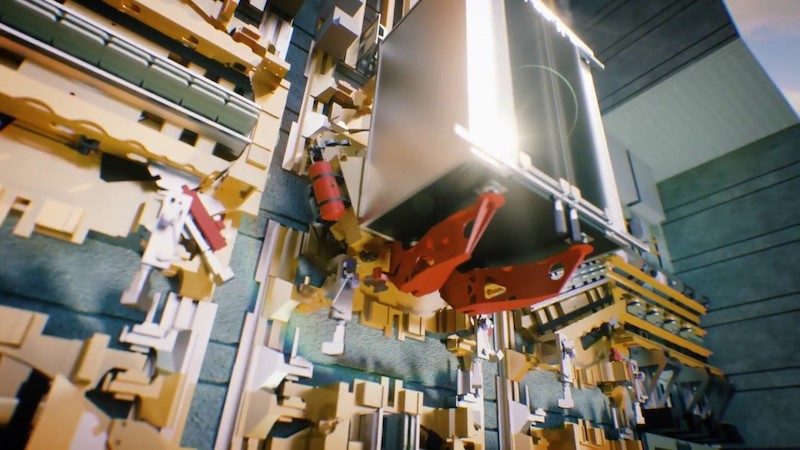Last May, Germany based Thyssenkrupp decided to divide itself into two separate companies as part of a major restructuring effort. That strategy called for spinning off its profitable Elevator Technology business unit via an Initial Public Offering or by putting that unit up for sale.
Elevator Technology, in the fiscal year ended Sept. 30, 2019, generated 907 million Euro (US$1 billion) in cash flow from 7.96 billion Euro in net sales, both up around 5% from the previous year. Thyssenkrupp’s total revenue, just under 42 billion Euro, was up only 1%, and the company reported a 260 million Euro net loss on top of a 12 million Euro loss the previous fiscal year.
Thyssenkrupp, as a corporation, is also groaning under 8.5 billion Euro in pension obligations and 5.1 billion Euro in net debt.
The Elevator Technology unit—which made waves a few years ago with MULTI, the industry’s first sideways-moving elevator transport system—has since drawn interest from at least four investor groups, including one that includes Finnish engineering firm Kone Oyj and CVC Capital Partners, which last week reportedly made a non-binding offer of 17 billion Euro. Bloomberg reports that Kone gave Thyssenkrupp the option of receiving all cash or a combination of cash and stock for the elevator business. And to mollify regulators over any antitrust issues, Kone said it would hand the Elevator Technology operations in Europe to CVC.
Last year, regulators scotched Thyssenkrupp’s attempt to forge a joint venture between its Steel Europe business unit and Tata Steel Ltd.
Last November, Reuters reported that Kone proposed paying Thyssenkrupp a multibillion-euro breakup fee (reportedly the equivalent of US$3.3 billion) to improve its position in the company’s auction of its elevator unit.
The other investor groups vying to acquire Thyssenkrupp’s Elevator Technology unit reportedly include a consortium of Blackstone Group, Carlyle Group, and Canada Pension Plan Investment Board. Advent International, Cinven and the Abu Dhabi Investment Authority form another investor group. And Brookfield Asset Management partnered with Temasek Holdings Pte to bid. These offers reportedly were all under 16 billion Euro, but suitors will have the opportunity to adjust their bids next month.
Thyssenkrupp has also disclosed that it plans to put its plant-building unit—which makes chemicals, cement, and fertilizer plants—on the auction block, possibly selling the division in parts.
Related Stories
| Jan 4, 2011
6 green building trends to watch in 2011
According to a report by New York-based JWT Intelligence, there are six key green building trends to watch in 2011, including: 3D printing, biomimicry, and more transparent and accurate green claims.
| Jan 4, 2011
LEED standards under fire in NYC
This year, for the first time, owners of 25,000 commercial properties in New York must report their buildings’ energy use to the city. However, LEED doesn’t measure energy use and costs, something a growing number of engineers, architects, and landlords insist must be done. Their concerns and a general blossoming of environmental awareness have spawned a host of rating systems that could test LEED’s dominance.
| Dec 17, 2010
New engineering building goes for net-zero energy
A new $90 million, 250,000-sf classroom and laboratory facility with a 450-seat auditorium for the College of Electrical and Computer Engineering at the University of Illinois at Urbana/Champaign is aiming for LEED Platinum.
| Dec 6, 2010
Honeywell survey
Rising energy costs and a tough economic climate have forced the nation’s school districts to defer facility maintenance and delay construction projects, but they have also encouraged districts to pursue green initiatives, according to Honeywell’s second annual “School Energy and Environment Survey.”
| Nov 29, 2010
Data Centers: Keeping Energy, Security in Check
Power consumption for data centers doubled from 2000 and 2006, and it is anticipated to double again by 2011, making these mission-critical facilities the nation’s largest commercial user of electric power. Major technology companies, notably Hewlett-Packard, Cisco Systems, and International Business Machines, are investing heavily in new data centers. HP, which acquired technology services provider EDS in 2008, announced in June that it would be closing many of its older data centers and would be building new, more highly optimized centers around the world.
| Nov 16, 2010
Calculating office building performance? Yep, there’s an app for that
123 Zero build is a free tool for calculating the performance of a market-ready carbon-neutral office building design. The app estimates the discounted payback for constructing a zero emissions office building in any U.S. location, including the investment needed for photovoltaics to offset annual carbon emissions, payback calculations, estimated first costs for a highly energy efficient building, photovoltaic costs, discount rates, and user-specified fuel escalation rates.
| Nov 9, 2010
12 incredible objects being made with 3D printers today
BD+C has reported on how 3D printers are attracting the attention of AEC firms. Now you can see how other creative types are utilizing this fascinating printing technology. Among the printed items: King Tut’s remains, designer shoes, and the world’s smallest Rubik’s Cube.
| Nov 5, 2010
New Millennium’s Gary Heasley on BIM, LEED, and the nonresidential market
Gary Heasley, president of New Millennium Building Systems, Fort Wayne, Ind., and EVP of its parent company, Steel Dynamics, Inc., tells BD+C’s Robert Cassidy about the Steel Joist Manufacturer’s westward expansion, its push to create BIM tools for its products, LEED, and the outlook for the nonresidential construction market.












